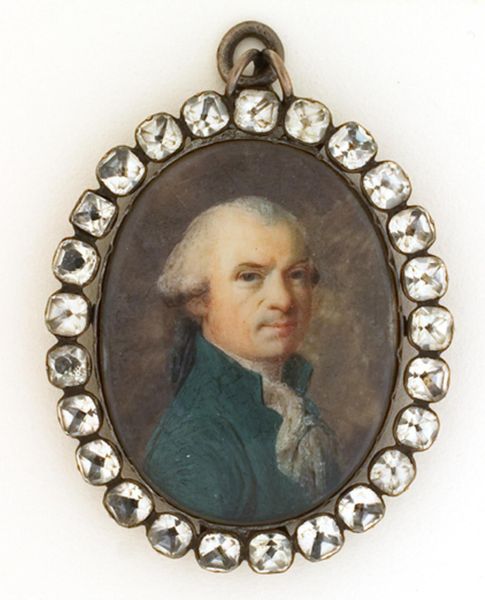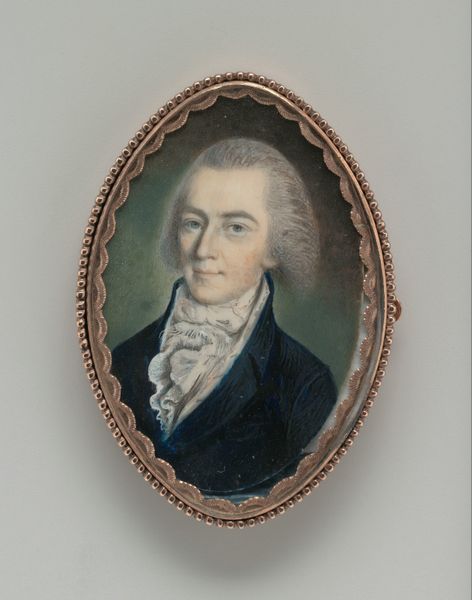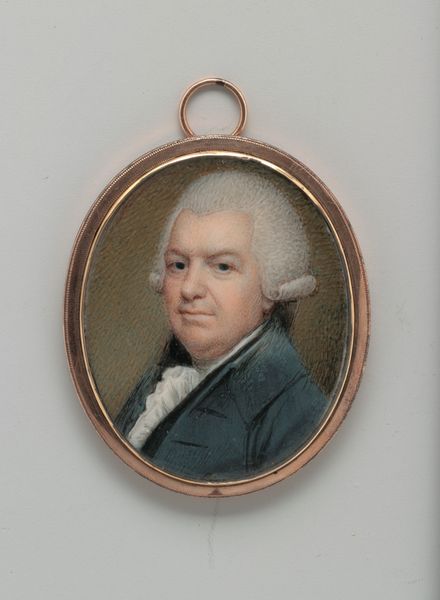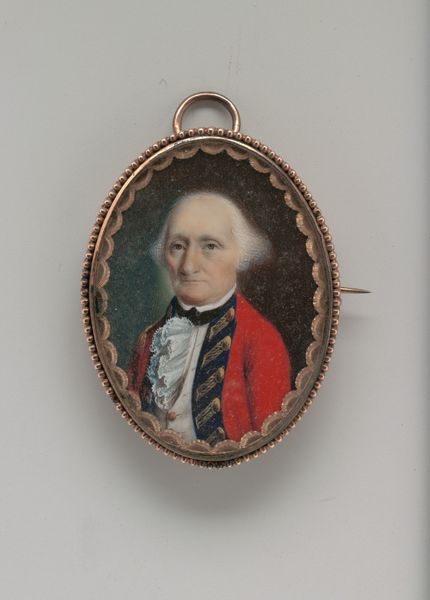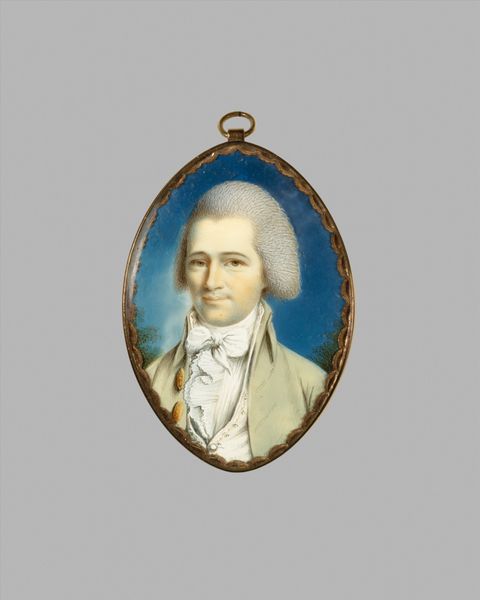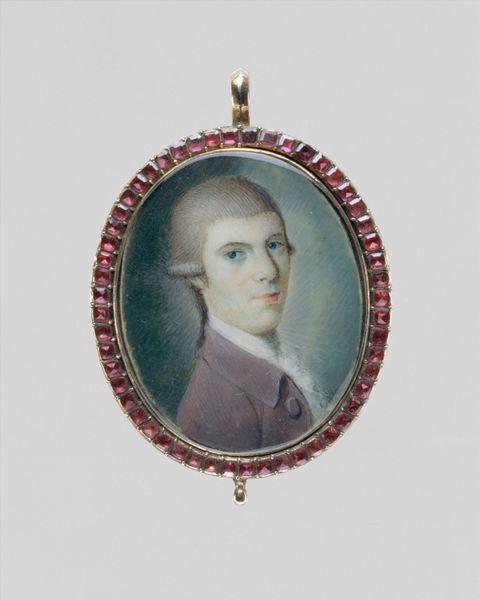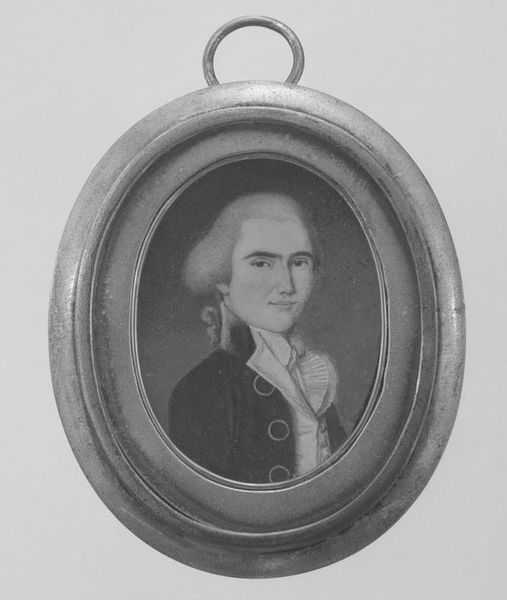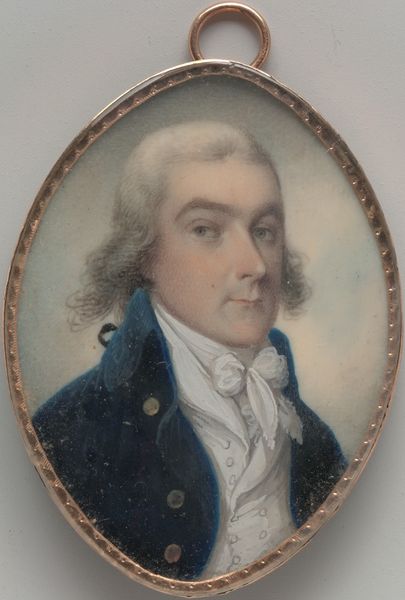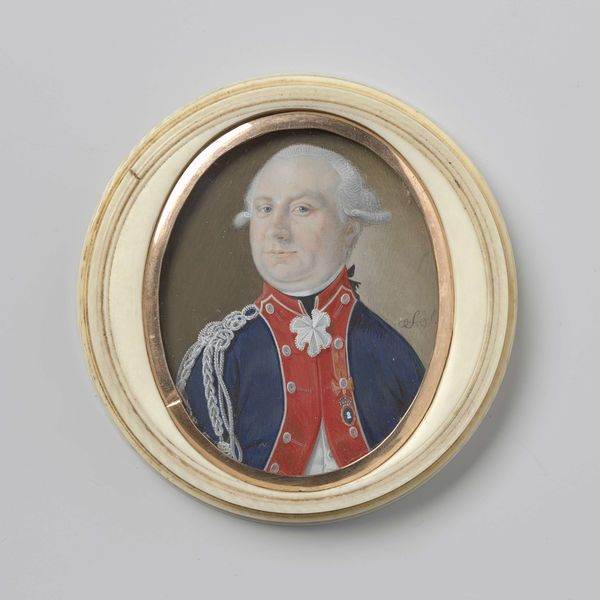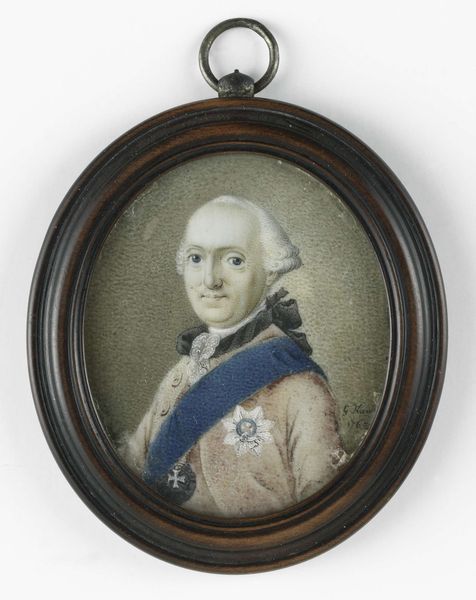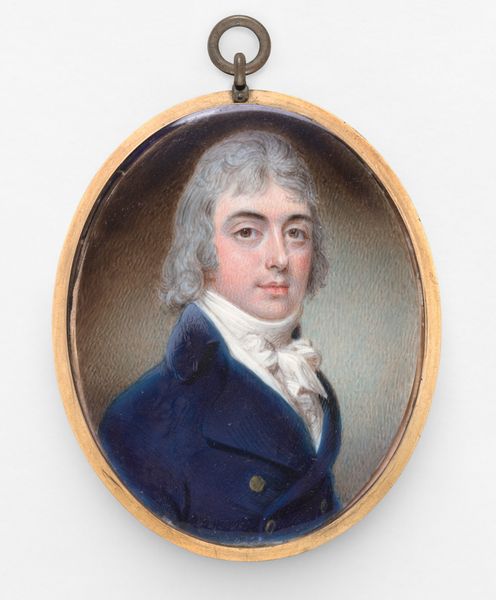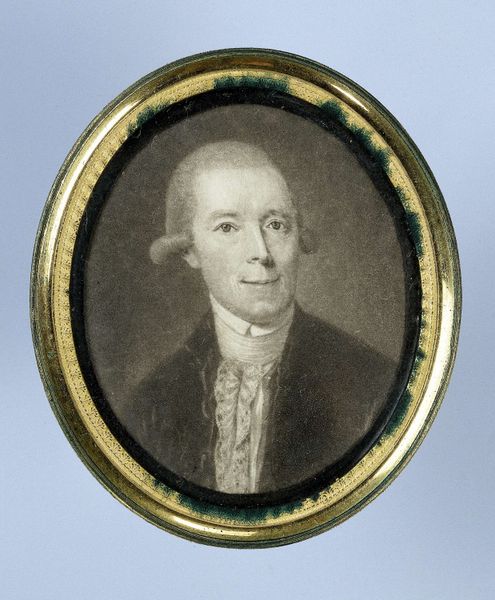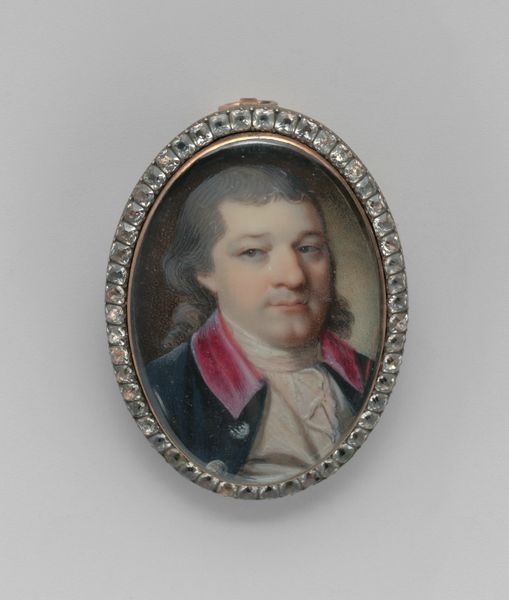
painting
#
portrait
#
neoclacissism
#
painting
#
sculpture
#
history-painting
#
academic-art
#
miniature
Dimensions: 1 7/8 x 1 1/2 in. (4.8 x 3.7 cm)
Copyright: Public Domain
Curator: Here we have a miniature portrait, "George Henry Remsen," dating from around 1787 to 1790, attributed to William Verstille. The frame is exquisite, drawing immediate attention. Editor: Yes, the craftsmanship in the gold setting really struck me. What's interesting is considering how different this miniature is from large history paintings popular at the time, given they’re both rooted in Neoclassicism. What stands out to you when you look at it? Curator: Well, this isn't merely a depiction of a man. It's a crafted object, reflecting a particular social context and means of production. Think about the gold: where did it come from? Who mined it? Who crafted the intricate setting? This miniature embodies not just artistry, but also the economic system that sustained it. Consider, too, the labour invested versus the scale: It is intensely material yet deliberately crafted to appear effortless. How might its purpose, being so intimate and small, alter its value as both commodity and an art object? Editor: That's fascinating. It reframes the entire piece! We aren’t simply appreciating it as art, but deconstructing the materials and the labour, too. Does that suggest a challenge to the established artistic boundaries of its era? Curator: Precisely. Academic art emphasized skill, certainly, but within a hierarchy that prized painting and sculpture above what might be considered "craft." The meticulous details of the portrait are inseparable from the act of making it: from the pigments employed to render flesh tones, the artist reveals the hand, making present the work performed to generate an idealized object. Also, let's consider how an object like this may have operated within networks of trade and power... Did Mr. Remsen own enslaved people whose labour generated his wealth? How might we then approach his visual presence as an image of power built on exploitation? Editor: So by considering the social and economic context, the artwork becomes less about the sitter and more about the processes behind it, the networks that enabled its creation. Thank you! It opens a new perspective. Curator: Absolutely. The intersection of materiality and meaning invites a deeper engagement with art history.
Comments
No comments
Be the first to comment and join the conversation on the ultimate creative platform.
